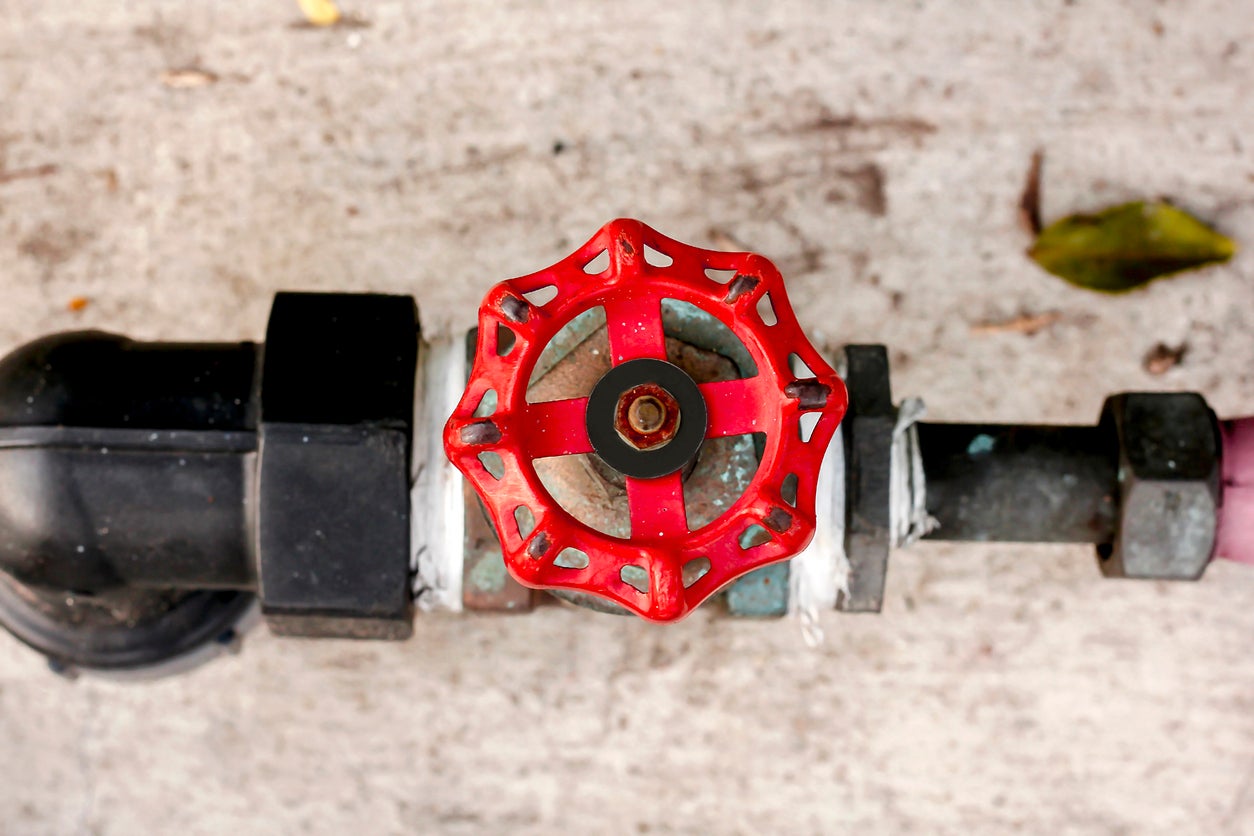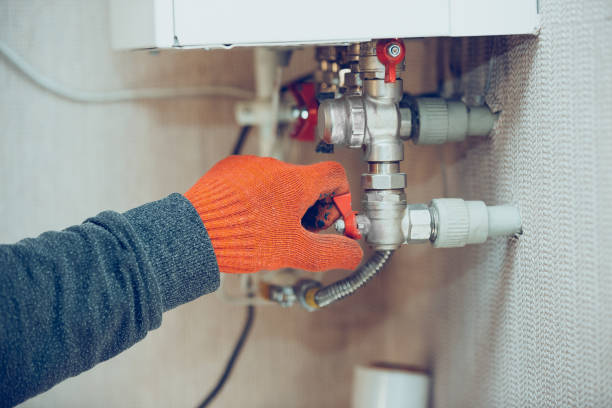Efficient Tips for Managing Low Water Pressure in Your Home
Efficient Tips for Managing Low Water Pressure in Your Home
Blog Article
Just how do you feel with regards to 9 Reasons for Low Water Pressure in Your House?

Low water pressure in your house can be a discouraging problem, affecting everything from bathing to cleaning meals. If you're experiencing weak water flow, there are several feasible causes and options to explore. In this guide, we'll talk about usual reasons for low tide pressure and useful actions to attend to the concern properly.
Introduction to Low Tide Pressure
Low water pressure takes place when the flow of water from your faucets, showers, and other fixtures is weaker than common. This can make day-to-day jobs much more tough and much less reliable. Comprehending the sources of low water stress is vital to locating the appropriate solution.
Typical Causes of Low Tide Stress
Pipe Obstructions
With time, pipelines can end up being clogged with mineral deposits, debris, or debris, restricting the circulation of water. This is an usual issue in older homes with galvanized steel pipes.
Corrosion
Deterioration within pipes can result in leakages and minimized water pressure. Rust build-up can restrict water flow, specifically in maturing plumbing systems.
Faulty Stress Regulatory Authorities
Pressure regulators are in charge of preserving regular water stress in your house. If they malfunction, it can result in low water stress or uneven circulation throughout the house.
Municipal Water Issues
In some cases, the trouble exists outside your home. Municipal water system concerns, such as main line leaks or maintenance job, can briefly decrease water stress in your location.
Just How to Diagnose Low Tide Stress
Inspecting Faucets and Fixtures
Start by testing the water pressure at different taps and fixtures throughout your home. If the issue is separated to specific locations, it may indicate local problems.
Examining Pipelines
Examine visible pipelines for signs of leaks, deterioration, or blockages. Take notice of any unusual sounds, such as knocking or rattling pipelines, which can suggest concerns within the plumbing system.
Consulting with a Plumber
If you're not able to pinpoint the root cause of low tide pressure, consider employing an expert plumber to conduct an extensive inspection. They can recognize underlying issues and recommend suitable remedies.
DIY Solutions to Deal With Low Tide Stress
Cleaning Aerators and Showerheads
Mineral deposits can collect in aerators and showerheads, lowering water circulation. Get rid of and clean up these elements regularly to improve water pressure.
Flushing Water Heater
Sediment build-up in the hot water heater can restrict flow and reduce efficiency. Purging the container regularly assists remove debris and maintain ideal efficiency.
Examining Pressure Regulatory Authority
Make certain that the stress regulator is functioning correctly. Adjusting or changing the regulatory authority can assist recover appropriate water pressure throughout your home.
Clearing Clogs in Piping
For small blockages, try using a plumbing serpent or chemical drainpipe cleaner to clear blockages in pipelines. Beware when making use of chemicals and comply with safety guidelines.
When to Call a Professional Plumber
If do it yourself initiatives stop working to deal with the issue or if you believe considerable plumbing problems, it's best to look for aid from an accredited plumber. They have the know-how and devices to deal with complex concerns securely and effectively.
Safety Nets to Keep Water Pressure
Routine Maintenance
Schedule regular upkeep for your plumbing system to stop concerns such as corrosion, leakages, and obstructions. Resolving small problems early can assist prevent more considerable repair work in the future.
Mounting a Stress Booster
Think about mounting a pressure booster pump to boost water pressure in areas with continually low flow. This can be particularly valuable for multi-story homes or residential properties with high-demand fixtures.
Monitoring Water Use
Be mindful of water usage behaviors and avoid overtaxing the plumbing system. Simple adjustments, such as shocking showers and laundry tons, can aid preserve sufficient water stress.
Verdict
Handling low tide stress can be frustrating, yet recognizing the underlying reasons and executing proper services can recover ideal circulation throughout your home. Whether it's cleansing aerators, checking pipelines, or talking to a plumber, taking aggressive actions can make certain a stable supply of water for your daily needs.
FOUR WAYS TO FIX LOW WATER PRESSURE NOW
Turning on a shower or faucet only to find the water comes out in a sad, slow drizzle is never a good feeling. How exactly are you supposed to wash a pan or take a quick shower when it takes 10 minutes just to rinse off a little soap? The good news is that when your water pressure is bad, there's always a cause: typically one that can be easily fixed. Here are some of the most common causes of low pressure and what you can do to fix the issue:
DEBRIS AND MINERAL DEPOSIT BUILDUPS
If you notice low water pressure from just one or two of the fixtures in your house, the problem likely has to do with debris buildup. Water is full of minerals and other debris, all of which can accumulate in your pipes and on your fixtures. This can cause a blockage that affects how much water flows through. To fix this, try filling a small plastic bag with white vinegar, and use a rubber band to hang it around your showerhead or faucet. Let the head of the fixture soak for a few hours, and the vinegar should loosen the deposits.
WATER LEAKS
Leaks are another common cause of low water pressure. If water is flowing out of your plumbing through a hole or crack before it can reach your fixture, the pressure coming out of the faucet or showerhead will be lower. A plumbing professional is your best bet for finding and repairing a leak in your water supply pipes.
Leaks are another common cause of low water pressure. If water is flowing out of your plumbing through a hole or crack before it can reach your fixture, the pressure coming out of the faucet or showerhead will be lower. A plumbing professional is your best bet for finding and repairing a leak in your water supply pipes.
FOUR WAYS TO FIX LOW WATER PRESSURE NOW
Turning on a shower or faucet only to find the water comes out in a sad, slow drizzle is never a good feeling. How exactly are you supposed to wash a pan or take a quick shower when it takes 10 minutes just to rinse off a little soap? The good news is that when your water pressure is bad, there's always a cause: typically one that can be easily fixed. Here are some of the most common causes of low pressure and what you can do to fix the issue:
DEBRIS AND MINERAL DEPOSIT BUILDUPS
If you notice low water pressure from just one or two of the fixtures in your house, the problem likely has to do with debris buildup. Water is full of minerals and other debris, all of which can accumulate in your pipes and on your fixtures. This can cause a blockage that affects how much water flows through. To fix this, try filling a small plastic bag with white vinegar, and use a rubber band to hang it around your showerhead or faucet. Let the head of the fixture soak for a few hours, and the vinegar should loosen the deposits.
WATER LEAKS
Leaks are another common cause of low water pressure. If water is flowing out of your plumbing through a hole or crack before it can reach your fixture, the pressure coming out of the faucet or showerhead will be lower. A plumbing professional is your best bet for finding and repairing a leak in your water supply pipes.
Leaks are another common cause of low water pressure. If water is flowing out of your plumbing through a hole or crack before it can reach your fixture, the pressure coming out of the faucet or showerhead will be lower. A plumbing professional is your best bet for finding and repairing a leak in your water supply pipes.
A VALVE ISSUE
If you have low water pressure throughout your home, check your main shut-off valve to make sure it's completely open. You may also want to see if there's a pressure-reducing valve installed. If there is, have a plumber help you adjust the settings to get the pressure you're looking for.
OTHERS USING WATER
Believe it or not, your low water pressure could be caused by your neighbors. If you notice low pressure at certain times of day, it may be because you and the people living next to you have similar schedules - when everyone is showering at the same time, the pressure will be lower in every home. Low pressure throughout the neighborhood may also be caused by an issue with your municipal water supply. If that's the case, call the supplier to see if they're working on the issue.
https://www.rotorooter.com/blog/water-leaking/low-water-pressure-fixes/

I ran across that piece of writing on 9 Reasons for Low Water Pressure in Your House when surfing around the search engines. Sharing is nice. Helping people is fun. I take joy in your readership.
Visit My Site Report this page